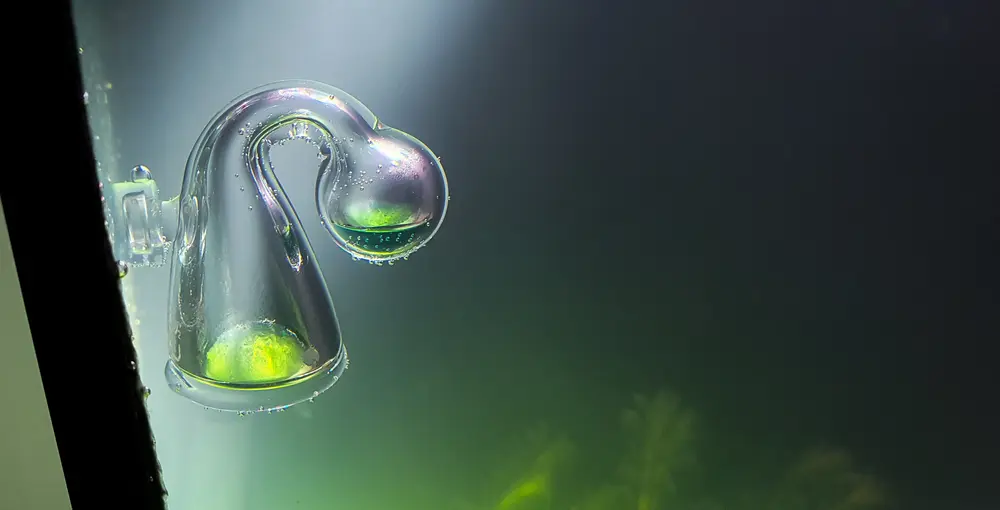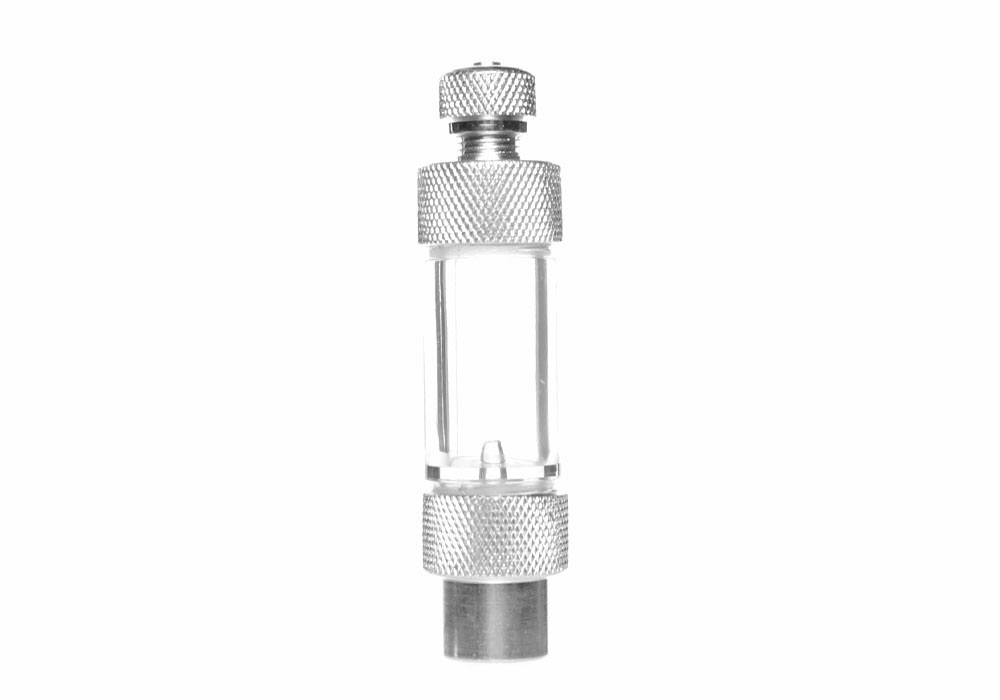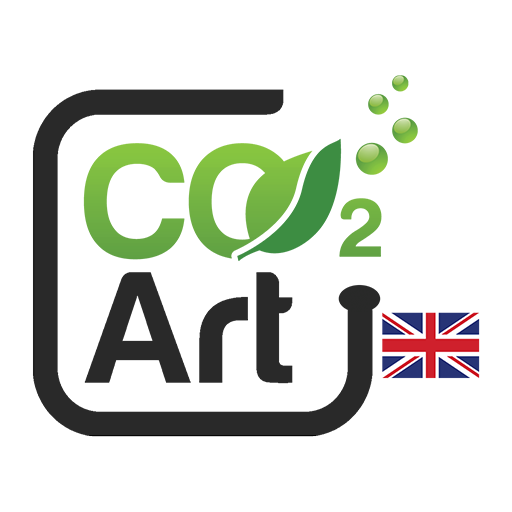Carbon dioxide in large concentrations is lethal to fish and other live creatures- that’s obvious. On the other hand, this gas is very beneficial for aquatic plants’ healthy growth and a well maintained CO2 planted aquarium is much more colorful and lush than without this gas. How to find the right balance in CO2 supplementation? You will find the answer in this article!
The CO2 drop checker method
This is probably the most common method of checking the CO2 level present in the aquarium water. Drop checker is simply a pH reagent and pH is connected with CO2 concentration). The indicator solution in the drop checker changes the colour depending on the amount of CO2 present in the aquarium. This reagent is a 4dKH solution mixed perfectly with bromothymol blue solution- a substance which is responsible for drop checker’s blue colour and changing properties.

The CO2 drop checker method is very well known by every aquarscaper, however the tricky thing is that we can’t measure the CO2 concentration accurately in water conditions. Why? Carbon dioxide dissolves in water 10.000 times slower than in the air. This means that there is muuuuuuch less CO2 in water than in the air so the standard CO2 sensors can’t really accurately reflect the amount of CO2 present in the tank water. Therefore the calibrated solution mixed in sterile conditions in form of a convenient bottle with liquid is a safe choice. It works on the market for years and drop checker is simply a visual indicator of CO2 concentration so you can always have your eye on it!
When the indicator is blue, there is too less CO2 in the aquarium water; if the drop checker is deep green- there is a safe amount of CO2. But if the colour of the fluid inside the chamber becomes lime green to yellow- you fish may be in danger! Then reduce the amount of bubbles with a needle valve. Yellow colour of the CO2 drop checker means that the water pH is too low and CO2 concentration is too high- live stock has too less oxygen to breath and therefore they can die.
The CO2 drop checker should be mounted on the inner glass of the aquarium with a suction cup, on the opposite site to the diffusion source (diffuser, filter inlet). This shows the most real read of the CO2 inside the tank as it measures the CO2 concentration not right in direct contact to CO2 source. Look at our video showing how to fill the glass chamber with the drop checker fluid properly!
However, the CO2 drop checker solution needs to be perfectly calibrated because even slight changes in carbonate hardness of the solution or bad proportions of the mixture can disturb the read effectiveness which is a great problem when it comes to sensitive creatures such as shrimp or discus requiring soft water with lower pH or opposite- cichlids requiring harder water with pH around 8.
The drop checker kit made by CO2Art you will find a glass chamber , a high quality suction cup and a bottle with the drop checker liquid. On the packaging you will find a pH scale showing the shade of the reagent contributing to the CO2 level.
Learn more about drop checkers in our article analyzing the topic more deeper!
How to check if the checker says the truth?
Now you may wonder: so how to recognize badly calibrated solution making the read inadequate?
Correlated method
I don’t think experienced hobbyists will be surprised here but we like proven solutions but the ones of the highest quality. Investment in reliable CO2 equipment is simply worth it. This gear is very fragile. Constant contact with high pressure, everyday operation for many hours of CO2 injection, and this must be done so accurately not to kill the cast and keep the plants looking good. But how to check its solid features and if the amount of CO2 is safe for your fish? Nothing beats the bubble counter.
Bubble counter
Bubble counter is also a CO2 indicator, however its work is not correlated to pH present in the aquarium water. This device is usually a glass or plastic chamber half filled with water. The CO2 passing through the chamber makes bubble inside the reservoir and thanks to the amount of bubbles per second we can estimate the amount of gas entering the aquarium. The device can be attached directly to the CO2 regulator so the user can see the bubbles right when adjusting the pressure with the high precision valve. There is an option to install the bubble counter in-line thanks to additional adapter allowing default positioning.

So how many bubbles per second?
Going further, the amount of bubbles going through the chamber should be correlated with the tank size, species of fauna and flora, lighting and ferts. Assuming that the lighting is moderate, there are no sensitive creatures and plants in the tank, the water parameters are normal, the rule of thumb should be used to adjust the pressure. For every 5 gallons of water, you should have 1 bubble per 3 seconds. So for example, for a 5 gallon tank, 1 bubble every 3 seconds. For a 20 gallon tank, 4 bubbles every 3 seconds. However this rule should be strongly connected with the drop checker read! Remember that high precision valve is very sensitive so make the changes slightly and just observe the drop checker colour. When it’s deep green and the amount of bubbles is constant and oscillates in areas showed by the rule of thumb, the CO2 supplementation is accurate for the fish and plants.
Our last but no least advise: search for solutions made by reliable brands. There is nothing worse that poorly calibrated fluid with not 4dkH standard solution. Watch our space full of experience in CO2 supplementation and inject CO2 to your planted aquarium in a master way supported by our cult drop checker kit.
Summary
In our opinion these two methods when used together are the easiest and safest ones to estimate the amount of CO2 being dissolved in the aquarium water. For now we have to wait for the technology to develop to read the CO2 concentration in the water more accurately, relying on high quality bubble counters and drop checkers available on the market. Although balancing the water parameters may look tough and complicated, you simply have to feel your underwater ecosystem and its functioning. Once you have your parameters in order and perform regular water changes, your planted aquarium has everything to show its best.
Psst! With our code WELCOME10 you’ll receive a 10% discount for your order! On our support portal you’ll find also tutorials and instructions very handy during installation.


Comments ( 13 )